Who knew?
Not us.
But we love puppies.
So, apparently, does the US Department of Interior.
They shared the following:
Nothing
is cuter than a puppy. But did you know that dogs aren’t the only
animals with pups? Other species (even some that are not members of the
canine family) have young that are also called pups. Many of these
animals can be found across our nation’s public lands. From wildlife
refuges and national monuments to wildernesses and national parks,
public lands provide a vital habitat for wildlife.
So on March 23 to celebrate National Puppy Day, we’re featuring some of our favorite pups that you can find on our public lands.
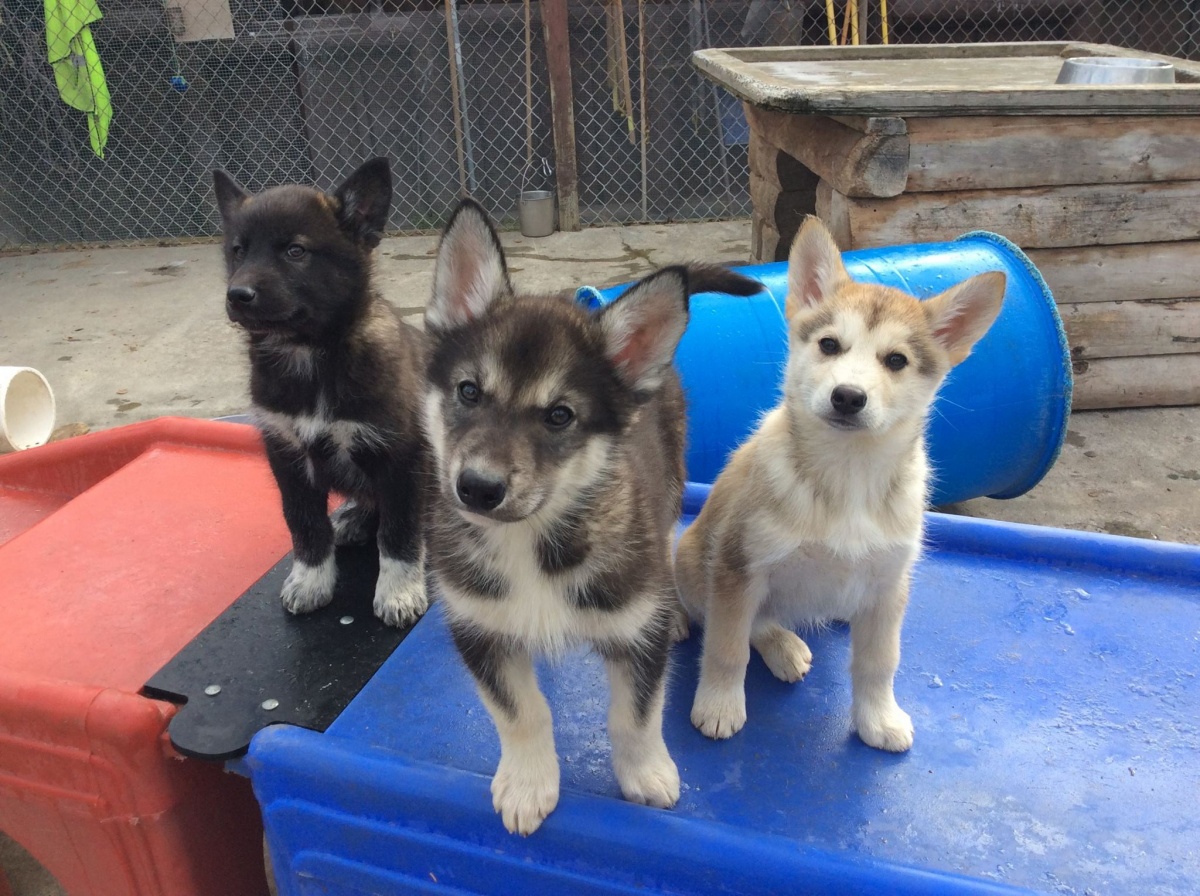
These cute pups are part of the sled dog team at Denali -- the only national park in the U.S. with working dogs. Sled dogs have an essential role in the life and culture of Alaska, and Denali’s team helps protect a national park and the wildlife, scenery and wilderness therein. Visit Denali’s website to meet the park’s canine rangers. This photo from last September shows three puppies -- Cupcake, Pinata, and Party -- in Denali’s “Birthday” litter. Photo by National Park Service.
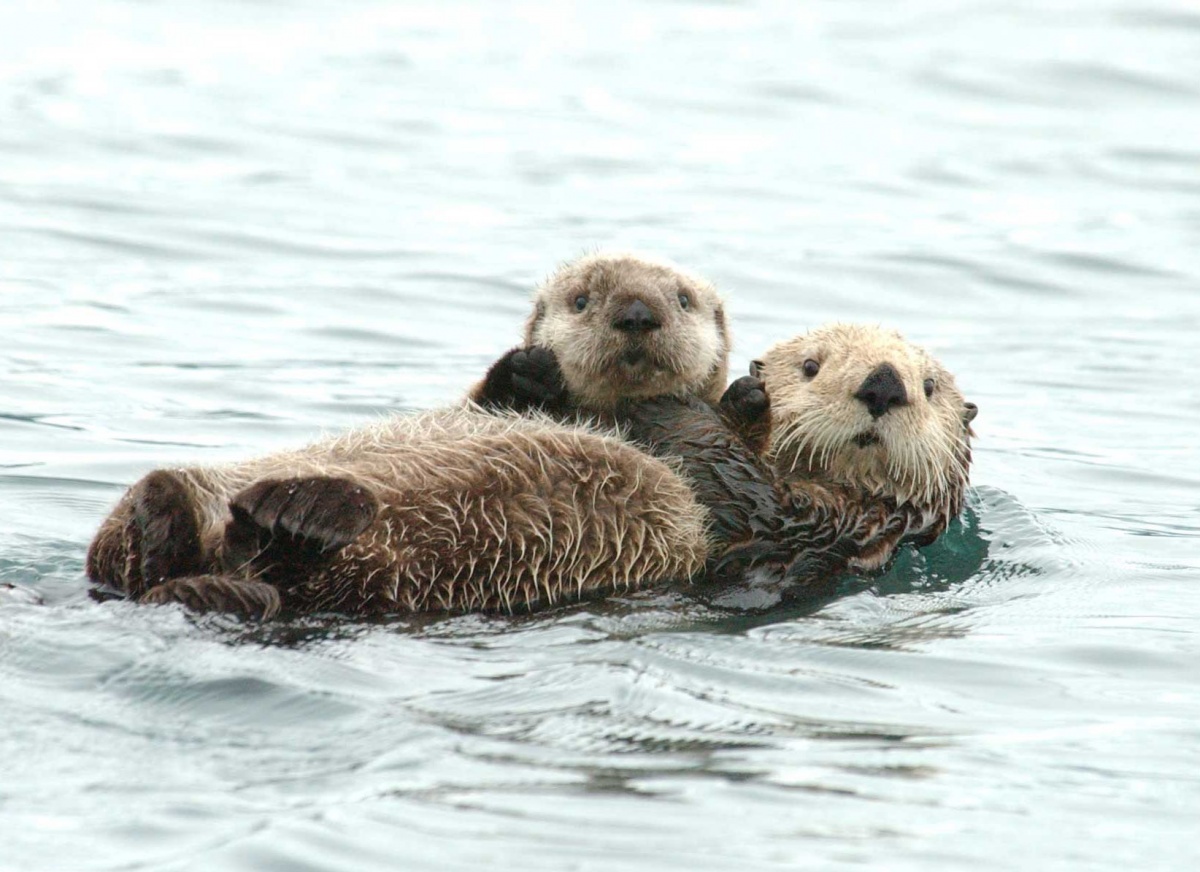
Aww! This cute little otter pup is resting on its mother’s belly as she floats in calm waters. Sea otters breed and pup year-round, with usually one pup born every 1-2 years. Their larger size, flatter tail, and grayish head distinguish them from river otters. One of the few mammals observed to use tools, sea otters use rocks to break the shells of shellfish and mollusks. Sea otters are mostly found off the coast of Alaska, including at Glacier Bay National Park & Preserve. Photo courtesy of Randall Davis under U.S. Fish and Wildlife Service permit No. MA078744-4.
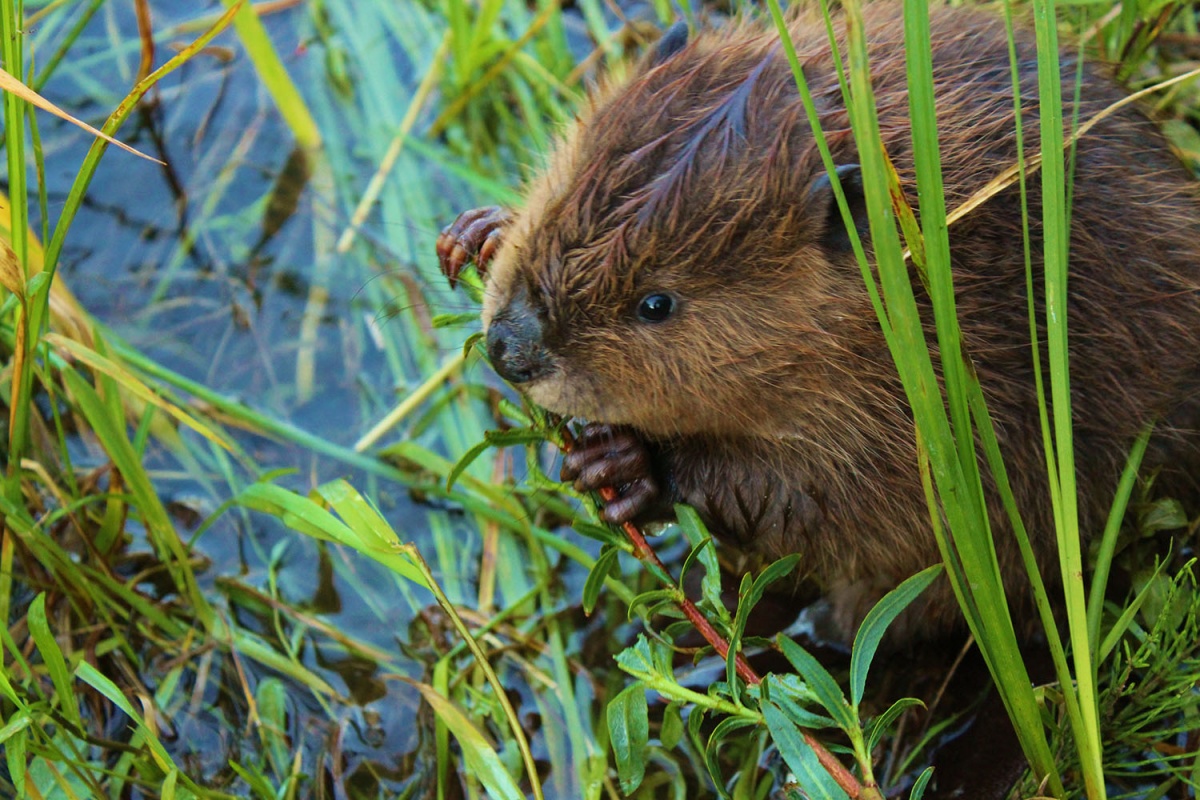
When they are first born, beaver pups are no larger than the size of your fist! The beaver is known for its flat tail that acts as a rudder, and its efficient ability to gnaw through wood. They live in colonies and remain with their mate for life, living about 8-10 years in the wild. Beavers are spread throughout North America, from Zion National Park in Utah to Colorado’s Rocky Mountain National Park to Voyageurs National Park in Minnesota. Learn more about the lumberjack of nature here. Photo of a baby beaver snacking on a stick by Tenise Kakuk (www.sharetheexperience.org).

Though mostly referred to as calves, baby dolphins are also sometimes called pups. Born after a 12-month gestation period, pups stay with their mothers for at least a year and a half, swimming with fellow members of their pod and learning a unique hunting style called “fish whacking.” Intelligent and playful, some species of dolphins can live to be 50 years old. You can find dolphins in Florida and throughout the Pacific Remote Islands, Rose Atoll, and Papahānaumokuākea Marine National Monuments. Photo of a pod of common dolphins by Lara Drizd, U.S. Fish and Wildlife Service.
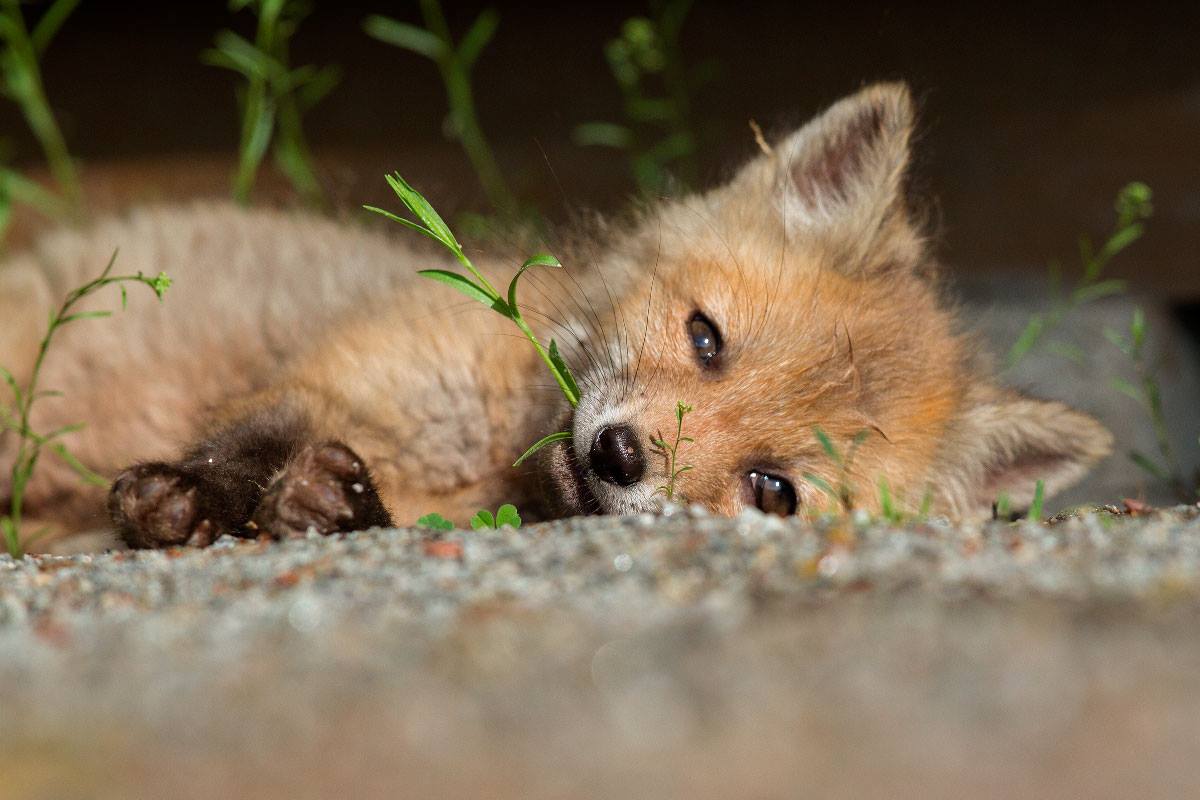
The red fox is a member of the canine family and can be found throughout the United States. In the spring, a mother fox gives birth to a litter of 2-12 pups (also called kits). When the pups are about seven months old, they’re ready to strike out on their own. By winter the pup will find a mate and will stay with that mate for the rest of their life. You can see fox pups across the U.S., like this one at Great Swamp National Wildlife Refuge in New Jersey. Learn more facts about red foxes on nps.gov. Photo by Ashleigh Scully via U.S. Fish & Wildlife Service.
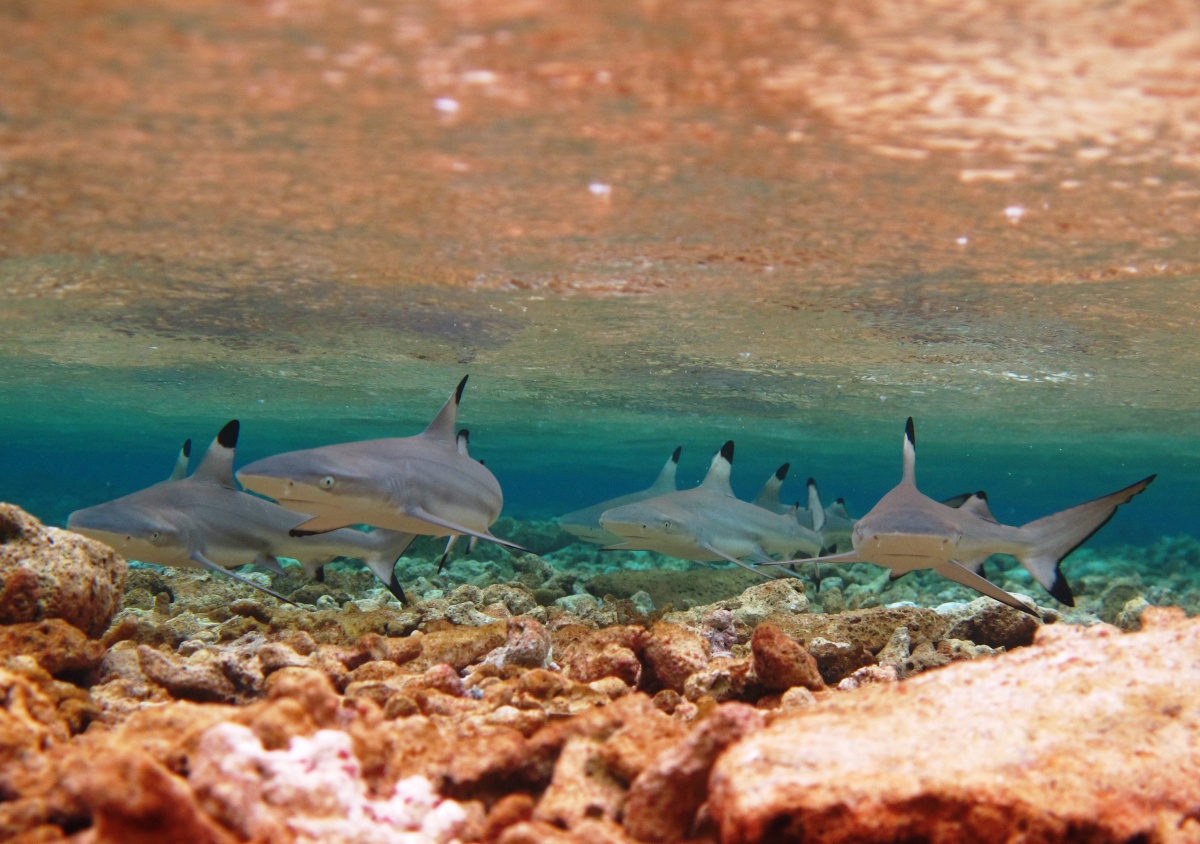
Though they may look like they are living large, these blacktip reef shark puppies are less than a foot long. Female blacktip reef sharks are one of the species of sharks that give birth to live young (other shark species are hatched out of eggs). Most litters contain two to four pups. These baby blacktip reef sharks are basking in the shallow lagoon protected by Palmyra Atoll National Wildlife Refuge in the Pacific Remote Islands Marine National Monument. The coral reefs surrounding Palmyra Atoll are part of an apex predator dominated ecosystem -- where sharks are king. Photo by Amanda Pollock, U.S. Fish and Wildlife Service.
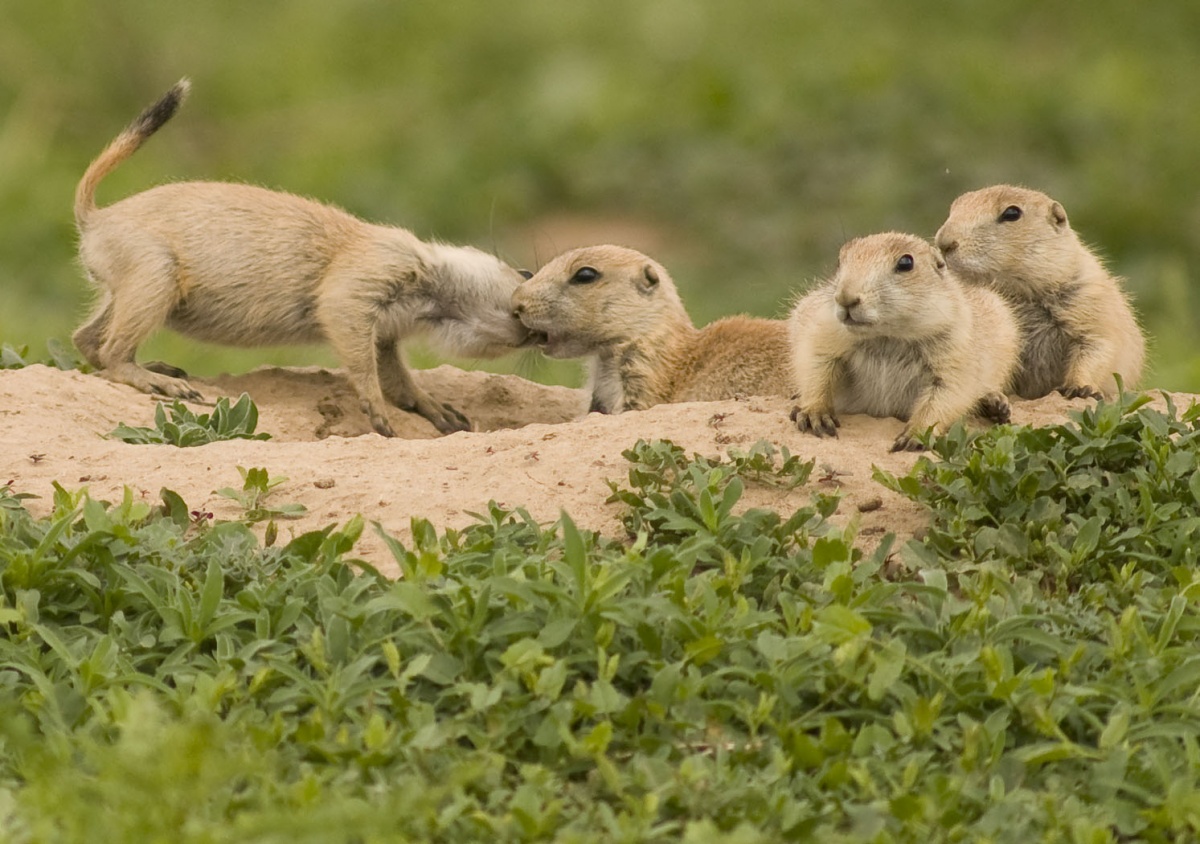
Look at these cute prairie dog pups! Though related to squirrels and not part of the canine family despite their name, prairie dogs bark like dogs. Fully grown at five months, pups live with their families in underground burrows which are often linked together to form large colonies or “towns.” Highly social, they have a variety of calls and also interact by “kissing” and grooming each other. Prairie dog mothers give birth to litters of 1 to 8 pups in April or May of each year. Look for the pups playing around their burrows at Colorado’s Rocky Mountain Arsenal National Wildlife Refuge in the spring, like these guys. Photo by Rich Keen, DRPA.
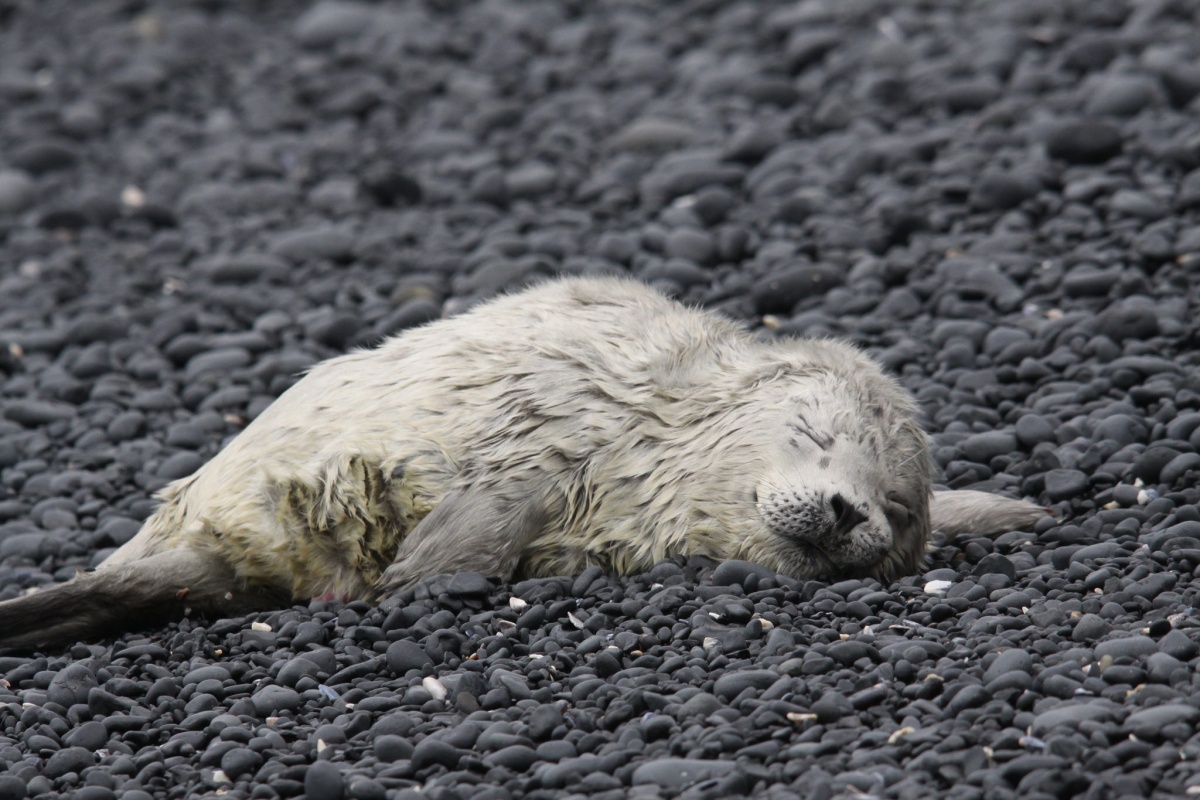
With many different species of seals living along the world’s coasts, these animals display an amazing variety of size and behavior. However, they all have something in common: really cute pups. Mostly born during the spring and summer months, seal pups are completely helpless and require a great deal of attention and protection from their mothers. This photo of a seal pup was taken at Yaquina Head Outstanding Natural Area, which extends out from the Oregon coast into the Pacific Ocean. The offshore islands are a year-round refuge for harbor seals. Photo by Bureau of Land Management.
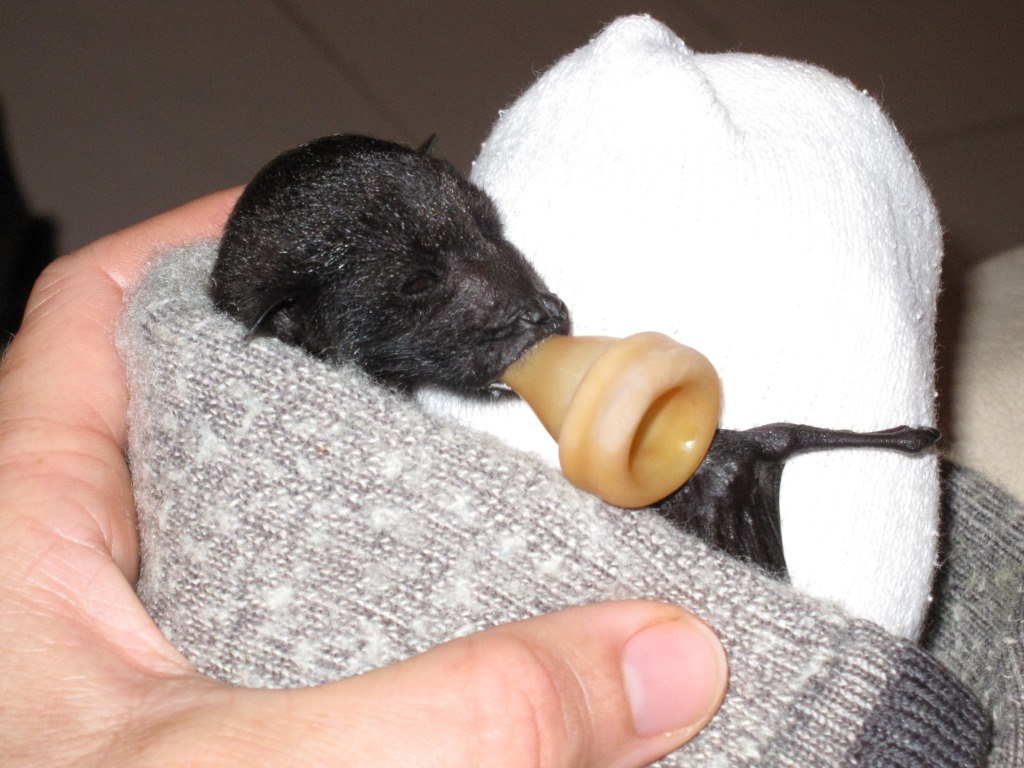
Bats can be found on nearly every part of the planet, and they come in all shapes and sizes. Most bats only give birth to one baby annually, and a pup can stay near its mother for up to a year. Like other mammals, mother bats feed their pups breastmilk, and will wrap baby bats in their wings for warmth and comfort. Pictured here is an orphaned baby Marianas fruit bat, which is found only on Guam and the Commonwealth of the Northern Mariana Islands. Guam National Wildlife Refuge provides a safe haven for this endangered species. Check out more interesting facts about bats on DOI.gov. Photo by U.S. Fish and Wildlife Service.
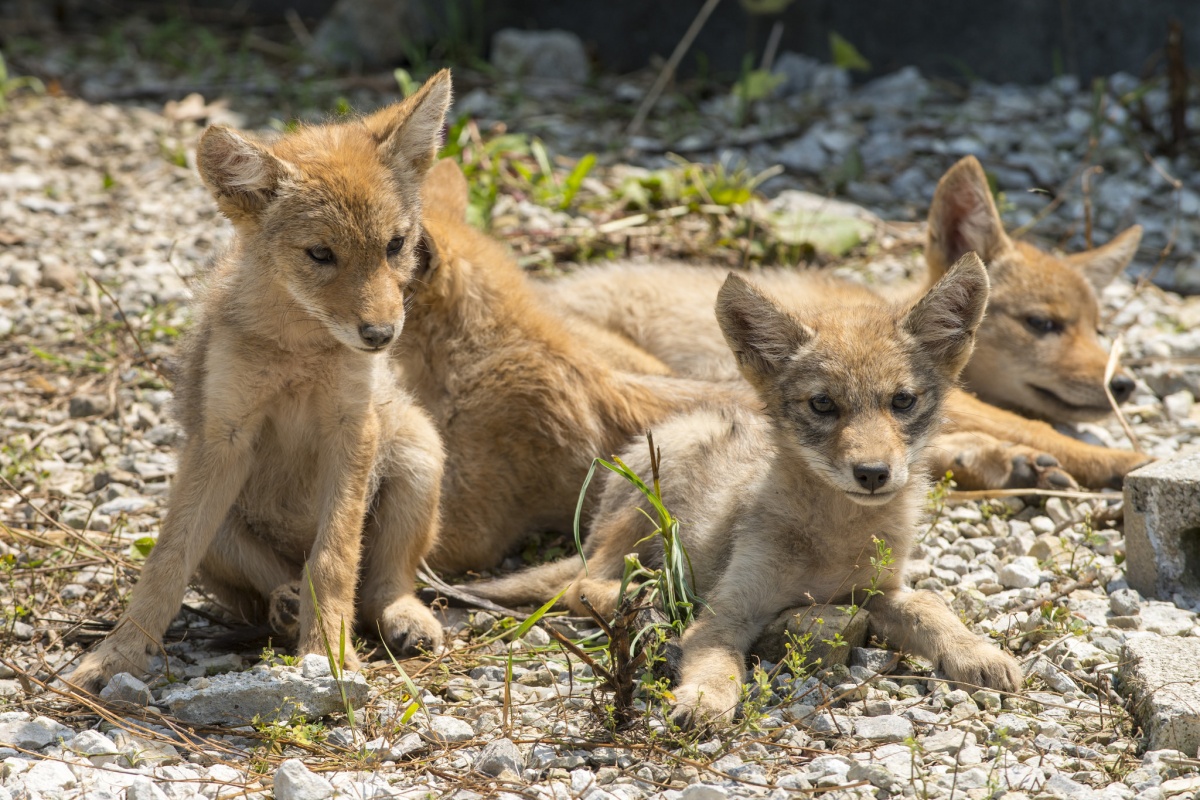
Although they are known for travelling alone or in pairs, coyotes are able to form significant family bonds. Often male and female coyotes will pair off and remain together for several years, establishing dens and mating between January and March. When a coyote pup is born, it is both hairless and sightless and will typically open its eyes after 10 days and will not leave the den until about 8-10 weeks of age. Coyote pups also love play fighting, and they begin at an early age to develop hunting skills. Wild sanctuaries like Rocky Mountain National Park allow coyotes to roam undisturbed. They can be spotted frequently during the daytime hours, and heard howling at night. Park visitors should never approach a coyote or pups, or disturb an active den site. Photo of coyote pups at Fermilab by the Department of Energy.
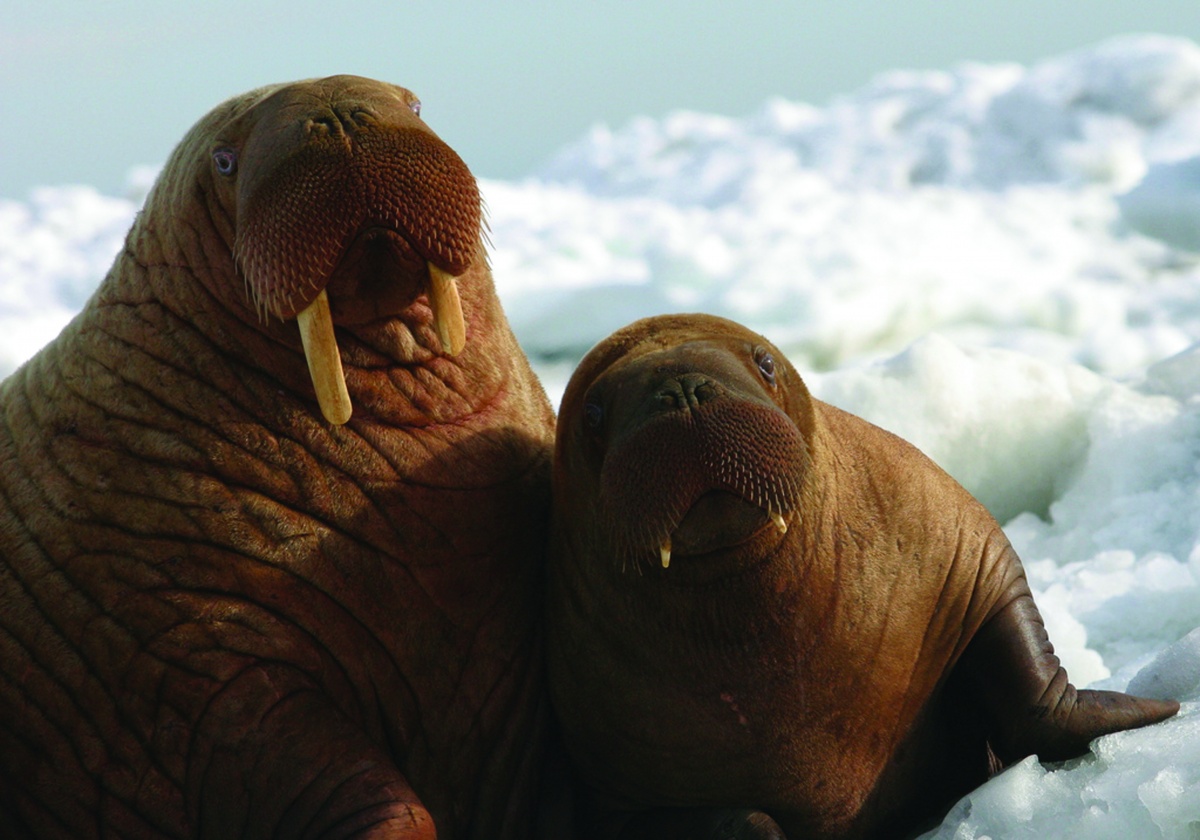
Walrus pups are able to swim at birth and weigh between 100 and 150 pounds. Most are only children (twin births are rare), and they stay with their mothers for two years. Eventually, their small young tusks will grow up to three feet long. Hunted for that precious ivory, walrus populations dropped rapidly in the 19th and 20th century, but have since started to rebound. Learn more about the Pacific walrus in Alaska. Photo of a Pacific walrus and its pup by U.S. Fish and Wildlife Service.
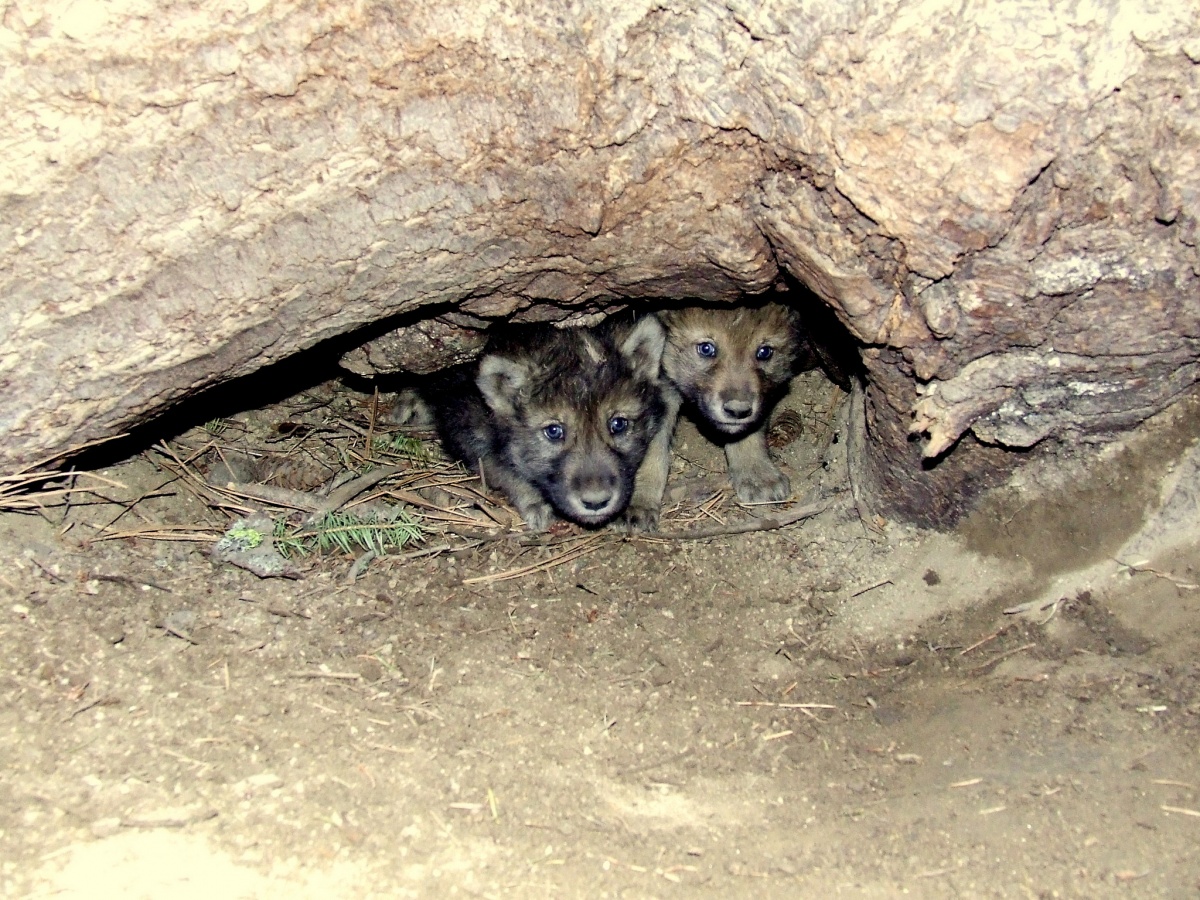
These gray wolf pups, usually born in April with a litter size of 4-5, emerge from the den 10-14 days after birth. A male pup can grow to about 100-130 pounds and females range from 80-110 pounds. Most active at dawn and dusk, wolves usually prey on young or weak animals and use their distinctive howl to communicate. If you’re lucky, you might see a wolf while visiting Yellowstone National Park. Photo by Hilary Cooley, U.S. Fish and Wildlife Service.
So on March 23 to celebrate National Puppy Day, we’re featuring some of our favorite pups that you can find on our public lands.
Dog Pup

These cute pups are part of the sled dog team at Denali -- the only national park in the U.S. with working dogs. Sled dogs have an essential role in the life and culture of Alaska, and Denali’s team helps protect a national park and the wildlife, scenery and wilderness therein. Visit Denali’s website to meet the park’s canine rangers. This photo from last September shows three puppies -- Cupcake, Pinata, and Party -- in Denali’s “Birthday” litter. Photo by National Park Service.
Otter Pup

Aww! This cute little otter pup is resting on its mother’s belly as she floats in calm waters. Sea otters breed and pup year-round, with usually one pup born every 1-2 years. Their larger size, flatter tail, and grayish head distinguish them from river otters. One of the few mammals observed to use tools, sea otters use rocks to break the shells of shellfish and mollusks. Sea otters are mostly found off the coast of Alaska, including at Glacier Bay National Park & Preserve. Photo courtesy of Randall Davis under U.S. Fish and Wildlife Service permit No. MA078744-4.
Beaver Pup

When they are first born, beaver pups are no larger than the size of your fist! The beaver is known for its flat tail that acts as a rudder, and its efficient ability to gnaw through wood. They live in colonies and remain with their mate for life, living about 8-10 years in the wild. Beavers are spread throughout North America, from Zion National Park in Utah to Colorado’s Rocky Mountain National Park to Voyageurs National Park in Minnesota. Learn more about the lumberjack of nature here. Photo of a baby beaver snacking on a stick by Tenise Kakuk (www.sharetheexperience.org).
Dolphin Pup

Though mostly referred to as calves, baby dolphins are also sometimes called pups. Born after a 12-month gestation period, pups stay with their mothers for at least a year and a half, swimming with fellow members of their pod and learning a unique hunting style called “fish whacking.” Intelligent and playful, some species of dolphins can live to be 50 years old. You can find dolphins in Florida and throughout the Pacific Remote Islands, Rose Atoll, and Papahānaumokuākea Marine National Monuments. Photo of a pod of common dolphins by Lara Drizd, U.S. Fish and Wildlife Service.
Fox Pup

The red fox is a member of the canine family and can be found throughout the United States. In the spring, a mother fox gives birth to a litter of 2-12 pups (also called kits). When the pups are about seven months old, they’re ready to strike out on their own. By winter the pup will find a mate and will stay with that mate for the rest of their life. You can see fox pups across the U.S., like this one at Great Swamp National Wildlife Refuge in New Jersey. Learn more facts about red foxes on nps.gov. Photo by Ashleigh Scully via U.S. Fish & Wildlife Service.
Shark Pup

Though they may look like they are living large, these blacktip reef shark puppies are less than a foot long. Female blacktip reef sharks are one of the species of sharks that give birth to live young (other shark species are hatched out of eggs). Most litters contain two to four pups. These baby blacktip reef sharks are basking in the shallow lagoon protected by Palmyra Atoll National Wildlife Refuge in the Pacific Remote Islands Marine National Monument. The coral reefs surrounding Palmyra Atoll are part of an apex predator dominated ecosystem -- where sharks are king. Photo by Amanda Pollock, U.S. Fish and Wildlife Service.
Prairie Dog Pup

Look at these cute prairie dog pups! Though related to squirrels and not part of the canine family despite their name, prairie dogs bark like dogs. Fully grown at five months, pups live with their families in underground burrows which are often linked together to form large colonies or “towns.” Highly social, they have a variety of calls and also interact by “kissing” and grooming each other. Prairie dog mothers give birth to litters of 1 to 8 pups in April or May of each year. Look for the pups playing around their burrows at Colorado’s Rocky Mountain Arsenal National Wildlife Refuge in the spring, like these guys. Photo by Rich Keen, DRPA.
Seal Pup

With many different species of seals living along the world’s coasts, these animals display an amazing variety of size and behavior. However, they all have something in common: really cute pups. Mostly born during the spring and summer months, seal pups are completely helpless and require a great deal of attention and protection from their mothers. This photo of a seal pup was taken at Yaquina Head Outstanding Natural Area, which extends out from the Oregon coast into the Pacific Ocean. The offshore islands are a year-round refuge for harbor seals. Photo by Bureau of Land Management.
Bat Pup

Bats can be found on nearly every part of the planet, and they come in all shapes and sizes. Most bats only give birth to one baby annually, and a pup can stay near its mother for up to a year. Like other mammals, mother bats feed their pups breastmilk, and will wrap baby bats in their wings for warmth and comfort. Pictured here is an orphaned baby Marianas fruit bat, which is found only on Guam and the Commonwealth of the Northern Mariana Islands. Guam National Wildlife Refuge provides a safe haven for this endangered species. Check out more interesting facts about bats on DOI.gov. Photo by U.S. Fish and Wildlife Service.
Coyote Pup

Although they are known for travelling alone or in pairs, coyotes are able to form significant family bonds. Often male and female coyotes will pair off and remain together for several years, establishing dens and mating between January and March. When a coyote pup is born, it is both hairless and sightless and will typically open its eyes after 10 days and will not leave the den until about 8-10 weeks of age. Coyote pups also love play fighting, and they begin at an early age to develop hunting skills. Wild sanctuaries like Rocky Mountain National Park allow coyotes to roam undisturbed. They can be spotted frequently during the daytime hours, and heard howling at night. Park visitors should never approach a coyote or pups, or disturb an active den site. Photo of coyote pups at Fermilab by the Department of Energy.
Walrus Pup

Walrus pups are able to swim at birth and weigh between 100 and 150 pounds. Most are only children (twin births are rare), and they stay with their mothers for two years. Eventually, their small young tusks will grow up to three feet long. Hunted for that precious ivory, walrus populations dropped rapidly in the 19th and 20th century, but have since started to rebound. Learn more about the Pacific walrus in Alaska. Photo of a Pacific walrus and its pup by U.S. Fish and Wildlife Service.
Wolf Pup

These gray wolf pups, usually born in April with a litter size of 4-5, emerge from the den 10-14 days after birth. A male pup can grow to about 100-130 pounds and females range from 80-110 pounds. Most active at dawn and dusk, wolves usually prey on young or weak animals and use their distinctive howl to communicate. If you’re lucky, you might see a wolf while visiting Yellowstone National Park. Photo by Hilary Cooley, U.S. Fish and Wildlife Service.
